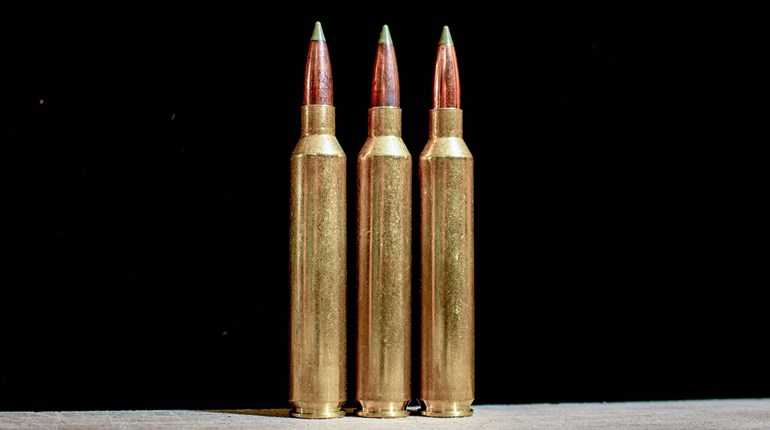
Some years ago, there was an essay by writer, revolversmith and instructor Grant Cunningham in which he decried the obsession you can find in some corners of the defensive-firearms world with what he memorably called “meaningless increments of precision.”
In his essay, Cunningham was referring to the tiny slices of time that can be measured by shot timers, and the way that it’s easy to get lost in the effort to shave those slices off our timed drills.
Don’t get me wrong, I’m a big advocate of using a timer to measure personal improvement in pistol-handling skills; speed and accuracy being the two most valuable coins of the defensive-pistol-shooting realm. At the same time, it’s important to be realistic and understand that the difference of a couple tenths on a slidelock reload or a few hundredths on your splits are unlikely to be the margin between success and failure anywhere outside of the contrived environment of a match stage or the safety of a pistol-training class.
(I see you there in the back, getting all agitated. I’m not saying don’t track your performance; I’m just saying to keep some perspective, that’s all.)
But, that software-and-performance stuff isn’t the only place we sometimes get caught up in meaningless increments of precision. It rears its statistically ugly head on the hardware side of things, too.
In a way, it’s understandable, because carrying a firearm for defense involves selecting a firearm and ammo, which generally involves a gunmaker and ammunition manufacturer having to sell you product. Selling you their product means having to convince you it’s better than the other guy’s, and that usually means numbers.
For handguns intended for concealed carry, this often involves measurements of weight or thickness. Everyone knows that a lighter gun is easier to carry, after all, and a thinner gun will “print” less through a cover garment. But, it’s definitely easy to get lost in the sauce of all the associated marketing hype.
“The Blastomatic 2000 is the slimmest 9 mm double-stack subcompact on the market!” or “The GatMaster Chihuahua is the lightest pocket magnum revolver you can buy!” These are things that make great ad copy—and good filler for a lazy reviewer in a hurry—but how much difference, really, do a couple tenths of an ounce make in a pistol’s concealability? Would you notice the difference .36 ounce makes on your belt or in your coat pocket over the course of a day? But, it’s a number that’s easy to quote and so people will use it to justify a choice.
Another common number that shows up is the weight of a trigger’s break. That’s an easy number for us, the reviewers, to give you. It’s concrete and can be revealed by some calibrated weights or a trigger scale. A lot of what is felt by the shooter’s finger when a trigger is pulled can be hard to define in words, and it’s easy to wind up writing something that sounds more like a wine tasting than a handgun review: “The trigger on the Sheepdog Defender opened with a smooth, brief takeup before hitting a crisp note on the break and finishing on a short, sharp overtravel.” It’s easy to read that and prefer a nice round number instead that can be plugged into a “Should I Buy This Gun” spreadsheet.
But, the nature of the trigger’s pull matters more for accuracy at speed than its absolute weight, or lack thereof. Similarly, a heavier trigger is not necessarily a panacea against making a loud mistake; the length of its travel during the pull is more important than the weight when it comes to protection against “woobie checking” (nervously touching the trigger) or involuntary clenches.
Perhaps nowhere is the “meaningless increments of precision” phenomenon found more often on the hardware side of the house than in caliber selection, or in the selection of specific defensive ammunition within a given caliber.
On one popular gun forum not long ago, I saw a common-tater (as Claude Werner, the Tactical Professor, likes to call them) take the time to construct an elaborate chart of common .38 Spl. defensive loads and their velocity and energy at various ranges. He did this as an indictment of the chambering; as though because there were more powerful offerings avail- able in 9 mm or .40 S&W, somehow .38 Spl. was doomed to bounce off bad guys these days.
Even more inexplicable are the shooters who choose the Thor-Hammer 147-grain over the competing loads from FreedomFist and ‘MurricaHeckYeah because, according to the data on the box flap, it’s 30 fps faster at the muzzle.
I don’t mean to be the bearer of bad tidings, but those box-flap numbers come from a test barrel at the manufacturer’s facility and may or may not have much correlation with how fast a projectile is ticking along when it exits the muzzle of your own pistol.
On top of that, you have to add in the phenomenon of “extreme spread.” In a string of 10 rounds fired from the same box of ammunition, from the same magazine, in the same gun, at one sitting, even the really good, name-brand ammunition with outstanding quality control will exhibit a roughly 30 fps spread between the slowest and fastest rounds in the box.
So, if you’re choosing Brand X over Brand Y based on a 15-fps difference in the ad copy—or, worse, getting into arguments about it on the internet—you’re probably wasting your time and your keystrokes from more worthwhile pursuits, like arguing over comic books or sourdough recipes.
Not everything is empirical, especially in shooting. Whether arguments of caliber, or specific loads within a caliber, it’s important to remember the old maxim that “Shot placement is king, adequate penetration is queen and everything else is angels dancing on pin heads.”






































